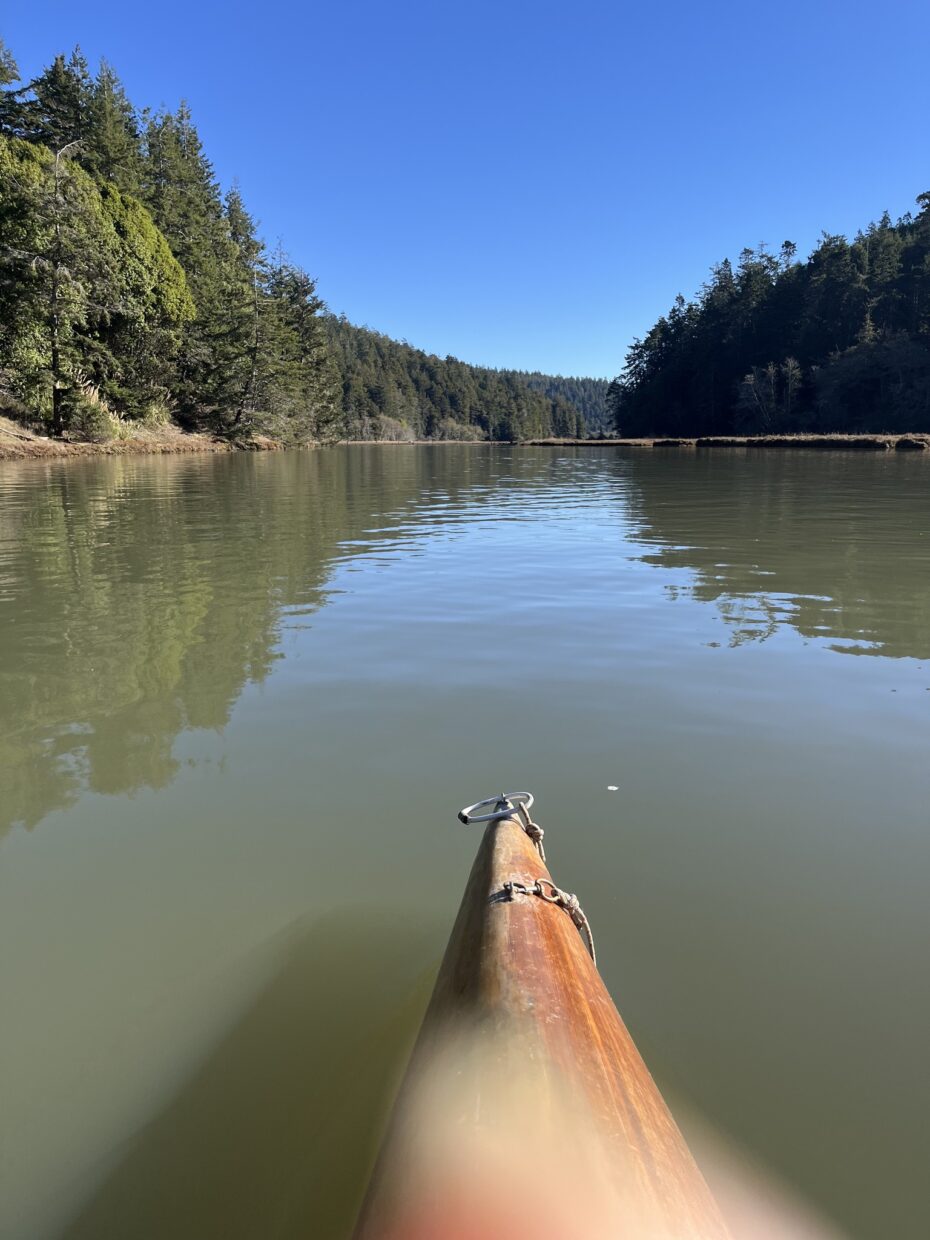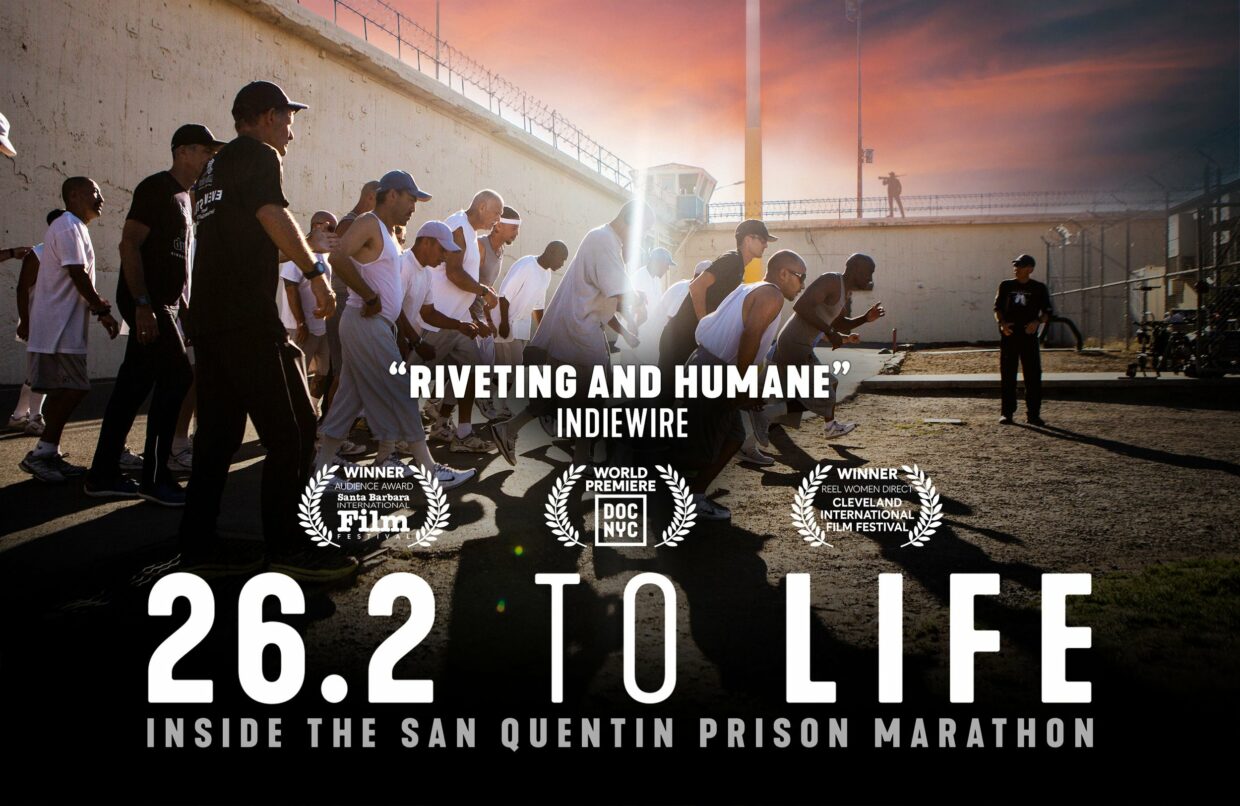In 2011 I swam a 10k race in the Applegate lake in Oregon. It was a four-lap race around a circular course of buoys that spanned a big chunk of the lake. Open water races with repeated laps are psychologically difficult–at least, for me–because, when you’re already exhausted, it’s really difficult to rally your spirits and override the morosity of “here we go AGAIN.” I remember finishing the third lap near what would eventually be the finish line–the wind had changed directions and intensified by then, and every stroke was a challenge–and thinking, “if I came out of the water now, who would know?” It was the sort of cognitive miasma that tends to hit, at least for me, at about 75% of the race–though sometimes it takes the form of what am I doing here? Why am I doing this? Normal people are just waking up for brunch. Who does this? Willingly? By the time the Oregon race rolled around, I was a fairly experienced open water swimmer (though new to marathons), and I already knew negative self-talk for what it was. When your brain starts vomiting garbage at you during an endurance race, if you know yourself well enough to expect it, you can identify the poisonous thought in your mind, like the Buddha greeting the demon Mara. I like to say to myself, “hello, Darkness, my old friend.” Usually it evaporates right away. Thing is, it would never occur to me–not in a million years–to actually exit the water after three laps of a four-lap race unless I was injured and intended to report as DNF right away. Not because I’m such a virtuous person–far from it–but because what would be the point? Didn’t I sign in to swim 10k? Why would I want to swim 7.5k and claim I swam 10k? what’s to be gained? And how would I look myself in the eye in the mirror later?
A couple of years later, a few of us were chatting over at the Marathon Swimmers Forum, and someone mentioned that he had overheard two (presumably) triathletes at the start line of that same race casually chatting about how they intended to only swim two or three laps, depending on how they felt like. We all found this very jarring, especially given how difficult it is to police open water races as it is. Everyone looks the same in the water with their race caps on, and no one is particularly invested in dogged surveillance of some particular dude, out of hundreds of others, getting out of the water a couple of laps earlier than he should.
This whole incident came back to mind when I read today’s article on Shvoong, an Israeli news source for everything endurance/adventure. Apparently, some guy ran the Ha-Yarkon Park Half Marathon wearing his own bib on his chest but keeping his friend’s bib in his pocket. Since this guy also happened to be very fast–he ran the race in 1:15–the ghost runner who “paced” him aroused suspicion, and the guy ended up confessing.
The interesting bit was that the story went viral in the online running community, and this guy actually replied to the post:
“Hi everyone, I’m commenting here because I think it’s about me. I ran with my chest bib according to the rules. In addition, there was an extra kit for a guy who could’t participate in my pocket. Out of my misunderstanding, I took the whole thing lightly, in perspective, without thinking too much about my ‘crime’. I learned this Friday from veterans in the running community that I wasn’t behaving with sportsmanlike ethics. I take full responsibility for my actions. I certainly learned from this and won’t do it again. I wish everyone quiet days.”
Later on, the same runner answered another commenter and expanded: “I’ll honestly say that, thanks to this incident, I learned a lot from veteran runners about the athletic unfairness, deeply, about what I’ve done… I tried to write something about my mistake/silliness/stupidity without hurting colleagues… I take full responsibility. I admit it was purely wanting to help a friend’s goal, who also did not understand the severity of the deed and I didn’t think it was such “deception” or immoral. The most important thing for me is that I learned from it and understood deeply the meaning of what I’d done. By the way, my results were disqualified as well and I’m glad justice was done.”
I find this absolutely fascinating, both as an athlete and as a criminologist. On one hand, true remorse is rare to find and difficult to identify, and if that’s what this is, then all’s well that ends well. On the other hand, how can a fairly fast runner–someone who finishes a half in 1:15 has (literally!) been around the block many times–fail to fully grasp the fundamental unfairness of what he’s done? Is it not plainly obvious that the concept of a race is that everyone competes under equal conditions? Have we not witnessed decades of quibbling over costumes, shoes, prosthetics, etc., in races to understand how important it is to keep athletic competitions fair? What’s there to misunderstand here?
The story sent me down a rabbit hole and I found out that marathon cheating is extremely common, to the point that a man named Derek Murphy has made it his life’s mission to catch the cheaters. The article expresses the same mystification I have with cheating; the only way to understand someone like Rosie Ruiz, the infamous Boston Marathon cheater, is to assume some form of individual clinical pathology. But the Ottawa Citizen ran a phenomenal in-depth story on marathon cheating, in which Jonathan Lasnier, a University of Ottawa sports psychologist, offers additional possibilities:
“Somebody can be task-oriented, and another can be ego-oriented,” he says. It’s the ego-oriented people who tend to be the cheaters. Rather than run the race for the sake of running it, “they will use other reference criteria to evaluate their competence,” says Lasnier. “They will focus more on the other people instead of themselves, and they will define success as superiority over others.”
Their mentality seems to be this: “when winning is everything, it is worth doing anything to win,” says Lasnier. But surely, not everyone who is motivated by ego and vanity is given to cheating? Surely there are some moral narcissists out there?
Lasnier says that it comes down to more personal factors. “I think it depends on your identity as an individual,” he says. A hypothetical: “Let’s say you’re an athlete and your identity is solely based on the fact that you are an athlete, and you want to perform and want to show competence toward others, because it’s the only thing in your life that’s supporting your identity. I think this can be dangerous, in a way.”
To Lasnier’s analysis I would add that the stakes of any given event are not the same for all people. Open water marathoners swim marathons because that’s what they do. But triathletes, like the two anonymous cheats that my friend overheard at the Applegate lake, probably register for open water races as prep for triathlons, which is the sport they really care about. They might have thought of the race as a nice opportunity to train for the swim leg and didn’t give a shit about the fact that the rest of us swam for time. Is it selfish? Sure. Does it reflect a common sort of solipsism, where you are only preoccupied with yourself and your goals and everyone else sort of fades into the background? Probably.
Similarly, someone who runs a marathon for time–for the sake of that very race–has a very different mentality than someone who runs it to qualify for another marathon (say, Boston). Indeed, one of the ways Derek Murphy catches Boston qualifier cheats is by comparing their qualifying time to the time they actually logged in Boston. This raises the inevitable question whether these people really believe that faking their results would produce an astonishing performance in Boston. To qualify for Boston, a woman my age (in the 50-54 age group) has to run a marathon in 3:50:00. In 2022, I ran the Oakland Marathon in about 5:15 (I’m slow and my knee caved in at mile 19). Wouldn’t it be weird if I qualified for Boston in less than four hours, only to run the actual race in more than five?
Still, if Lasnier is right, maybe the answer lies not so much in psychopathology but in sociology. I’m thinking specifically of Gresham Sykes and David Matza’s classic article Techniques of Neutralization (1958). Sykes and Matza wrote the article during a golden age of scholarly interest in juvenile delinquency, making a revolutionary (for its time) argument: juvenile delinquents do not have some warped sense of values and moralities that are opposed to ours. Indeed, they are on board with “our” (the supposedly law-abiding middle-class folks that Sykes and Matza envisioned as their audience) basic notions of justice and fairness. They therefore argued that “much delinquency is based on what is essentially an unrecognized extension of defenses to crimes, in the form of justifications for deviance that are seen as valid by the delinquent but not by the legal system or society at large.”
Sykes and Matza identify five such justifications: denial of responsibility (e.g., “it was an accident!”), denial of injury (e.g., “I just borrowed their car, what’s the big deal” or “they have insurance”), denial of the victim, (e.g., “that shop owner had it coming!” or “he had no business coming on to me at the pub”), condemnation of the condemners (e.g., “rich people steal all the time by evading taxes”), and appeals to higher loyalties (e.g., “I had to help my mom pay the bills.”)
The article itself is not based on empirical evidence, but rather on secondary observations of other people’s research, which are not without their flaws. Sykes and Matza do not consider, for example, the possibility that the interviewees might have actually held opposing values, but chose to explain what they had done in terms that they thought would appeal to their interviewers. And even though it is easy to see that these techniques of neutralization are framed in a way that does lend them persuasive purchase (after all, the question of damages, for example, is central to the disposition of tort cases, and the question of higher loyalties is fundamental to the necessity defense), it is not entirely clear why different people draw the line in different places on what seems to be persuasive. The Ha-Yarkon park runner, for example, relied on some of these: “I didn’t intend to” is a denial of responsibility; “I didn’t think anyone else was harmed” is a denial of injury and victim, and “I wanted to help a friend” is an appeal to higher loyalties. It doesn’t seem that folks bought his rationale, and his contrition does appear to reflect a sense of deeply buying into a set of norms that were, previously, extrinsic to him.
This is quite a sobering week to think about this stuff. First of all, it’s quaint to consider that, in 1958, a major innovation in criminology would have been to argue that delinquent teenagers are “just like us,” holding similar values and feeling guilt and shame, on a week in which the American people have voted for a man who still holds fast to the 1980s superpredator theory of juvenile delinquency (and who still openly and proudly espouses that the emblems of that flawed theory, the Central Park Five, who were exonerated by DNA evidence years ago, were guilty; they are suing him.) I have my own theories and opinions about the election, but the last thing we all need, I think, is more tiresome punditry about that, so I’ll keep it to myself. But in the spirt of “what is old is new again,” it’s interesting to consider that Sykes and Matza were writing against the grain of many delinquency scholars of their time in arguing that we share values in common even with people who appear to be doing things we all oppose, i.e., crime. Most people in the field at the time might as well have thought that folks of a different class and subculture lived on a different moral planet. I’d like to think, like Leonard Nemoy’s Spock in Star Trek, that there are always possibilities, and the coming years will provide ample opportunities to explore them.














